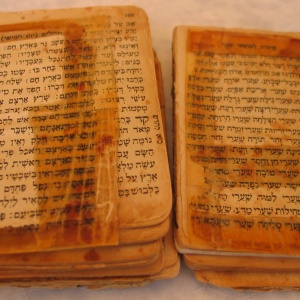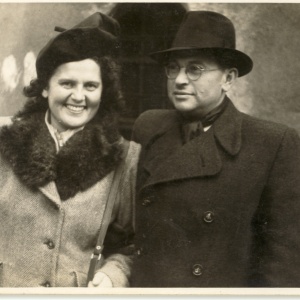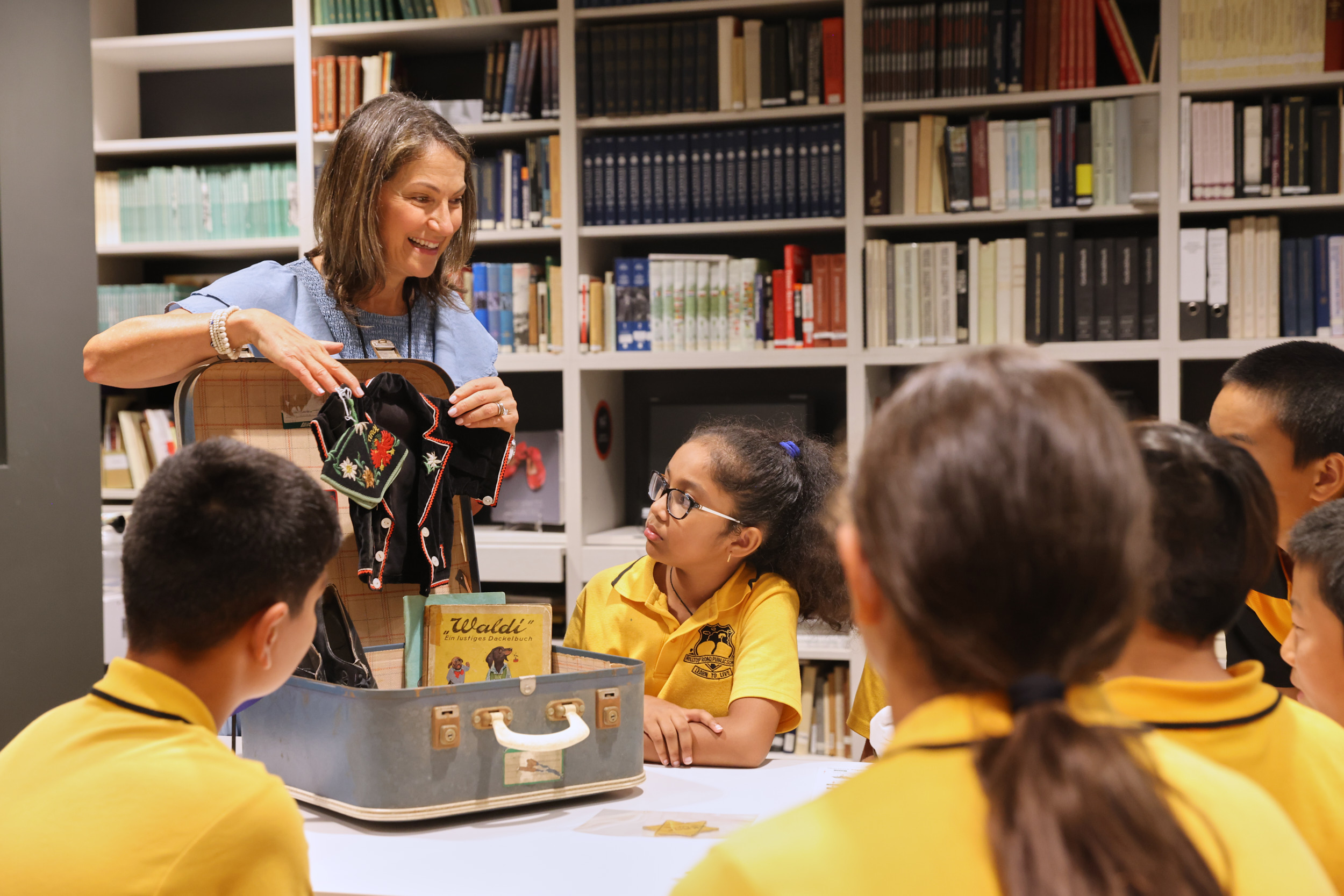Blog
July 6, 2016
Keeping the faith

There are two prayer books earmarked for the new exhibition – the owners of whom did not know one another at the time of acquisition. Both, imprisoned in Auschwitz, were desperate to obtain a Siddur (prayer book) to derive comfort from. Despite suffering from starvation and the fear of being caught praying, each saved their meagre bread rations in order to “buy” a prayer book.
Rabbi Benjamin Gottshall had just completed his rabbinical studies when he was posted to Louny in 1937 where met his first wife, Greta, whom he married in 1938. Despite receiving visas for the United States, he decided to remain with his congregation, where life was becoming very difficult for Jews in Czechoslovakia.
In 1942 Louny’s Jewish community, along with Rabbi Gottshall and his wife, was deported to Theresienstadt. There he secretly conducted religious services and recited prayers for those who died. As punishment, they were sent to Auschwitz. Rabbi Gottshall was put to work carrying boulders to rebuild the main road. He saved his bread rations to trade for a prayer book. When he found that the book did not contain all the prayers and psalms, he again saved his rations for a more complete book.
He prayed from it daily, stating, “Its pages are frayed, but to me it is my great treasure…Not that I would not have known the prayers by heart, but somehow, the printed prayers inspired my heart and soul much deeper.”
Religious observance in the camps entailed constant risks of discovery and resulting punishment. Despite the risks, Jana Prager also secured for herself a Siddur which strengthened her faith and will to survive.
Jana came from a renowned rabbinical family in Topalcany, Czechoslovakia. She was also deported to Auschwitz. She contracted typhoid and begged her friend to search for a prayer book, telling her, “Before I die, I am longing to have a prayer book. I have saved my bread to exchange for a prayer book.”
Jana was overjoyed to receive it. The other inmates were irritated. “Where is God?” they asked her. But Jana didn’t stop praying; she felt that she was being revived with the prayers.

Rebbetzin Jana and Rabbi Benjamin Gottshall, Prague, 1946
The prayer books soon to be on display side-by-side illustrate two examples of spiritual resistance of concentration camp inmates. What makes the story even more extraordinary is that Rabbi Gottshall and Jana Prager met each other after the war and married.
Rabbi Gottshall returned to Louny to find the community had been destroyed and Greta murdered. After recovering from TB he moved to Prague where he met Jana Prager, the sole survivor of her family. They married in Prague in 1946.
Three years later they escaped the communist regime with their daughter, arriving in Sydney in September 1949. A month later their son was born. As Rabbi Gottshall had no knowledge of English, he worked in a factory making boxes. B’nai B’rith gave him a small stipend so that he could focus on learning English. He was subsequently appointed as spiritual leader in numerous synagogues with Rebbetzin Jana Gottshall at his side.
Author: Roslyn Sugarman, Curator.


What’s On Newsletter
Keep up to date on all Museum events and exhibitions.